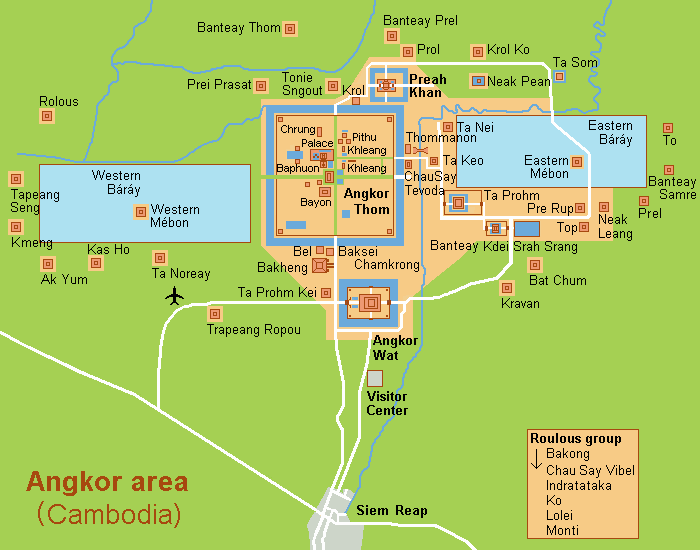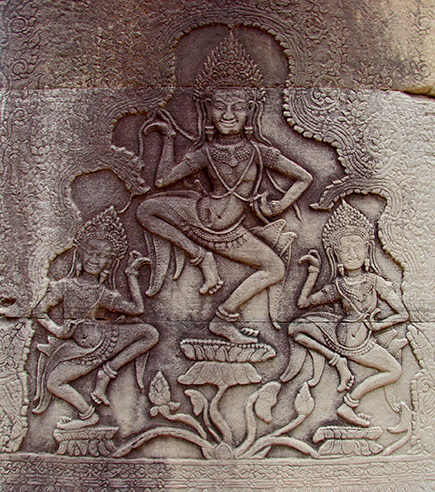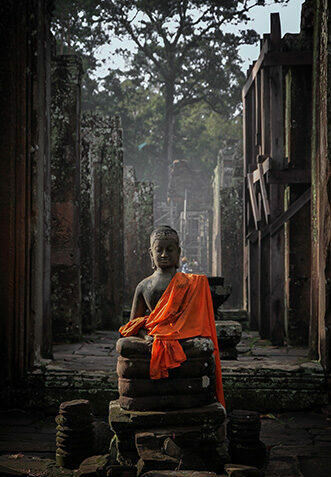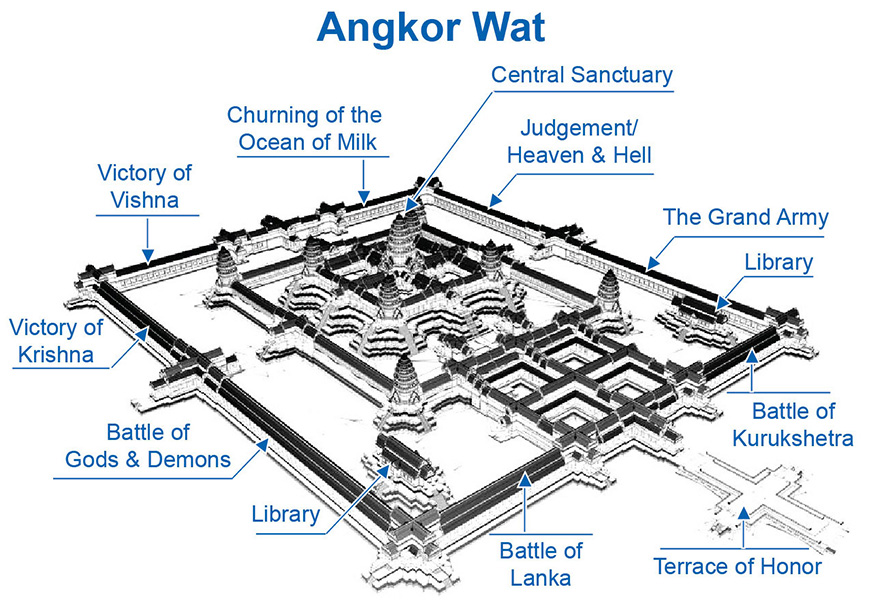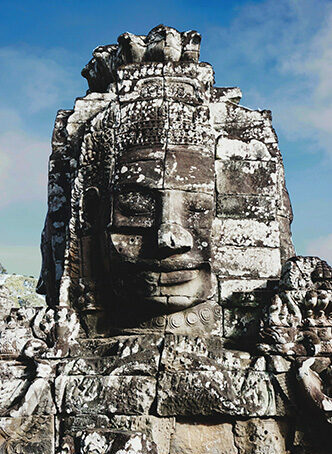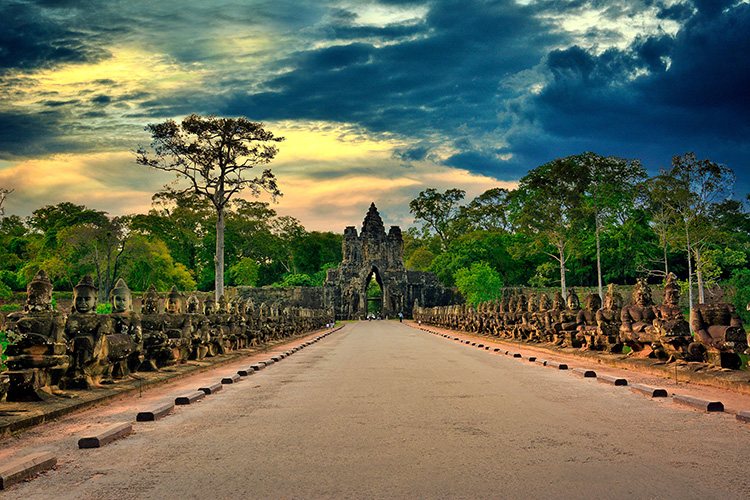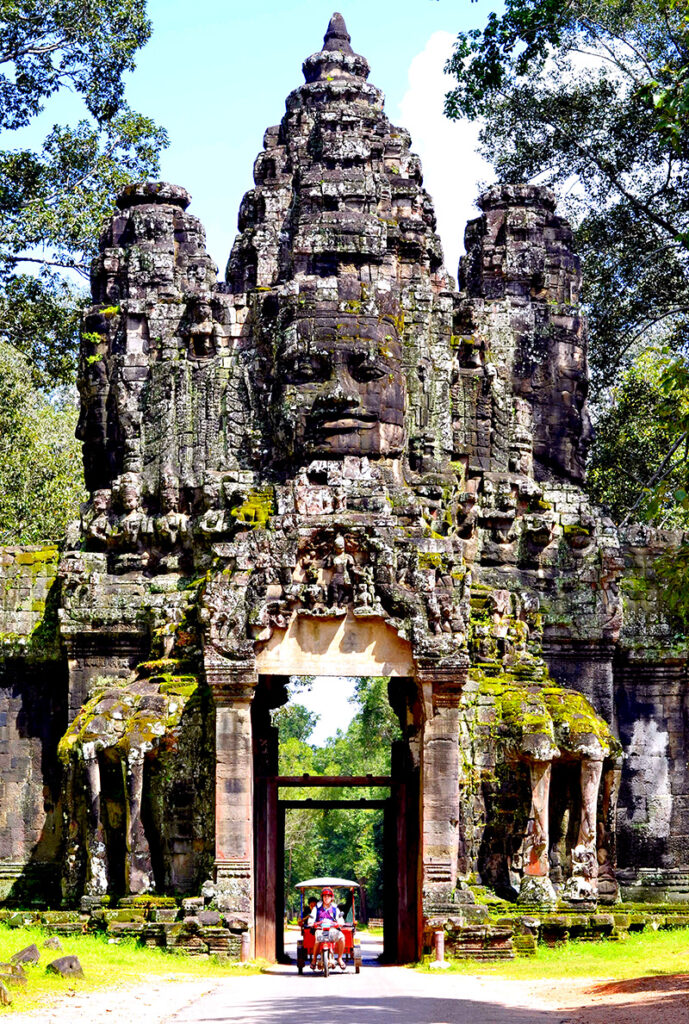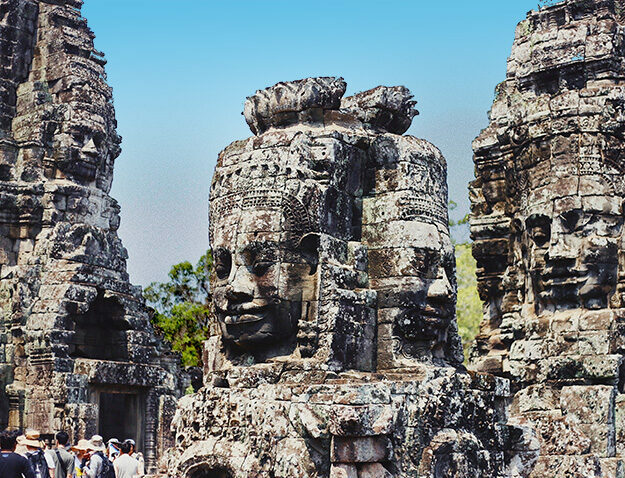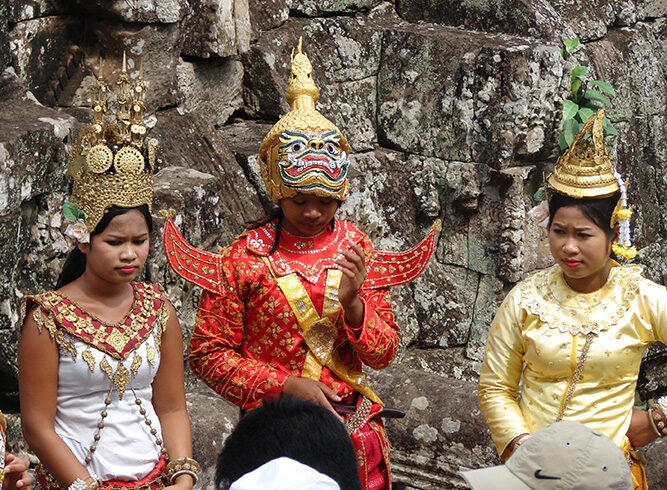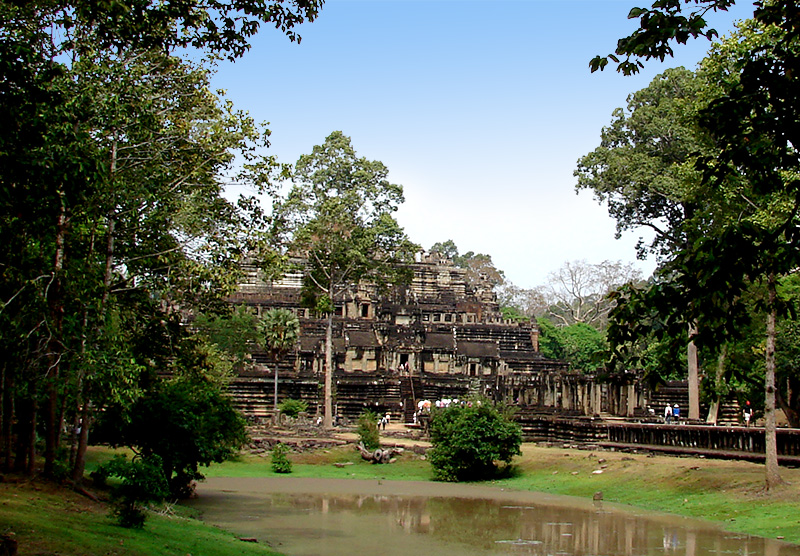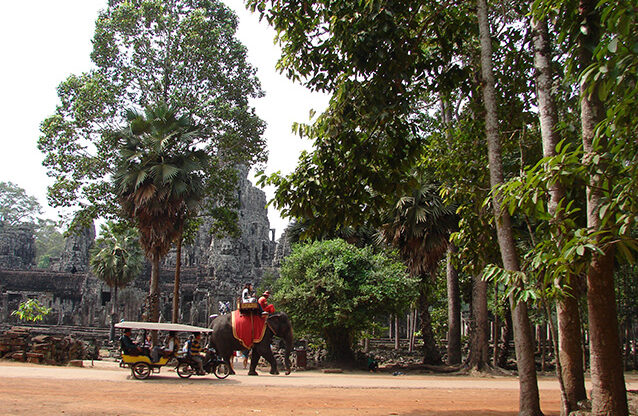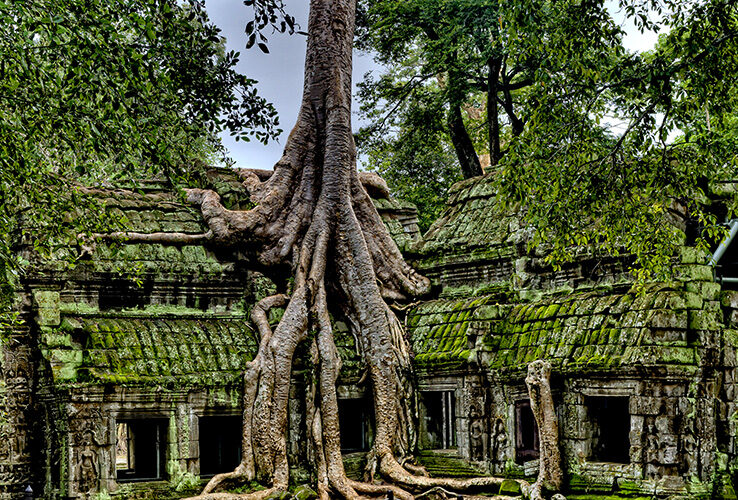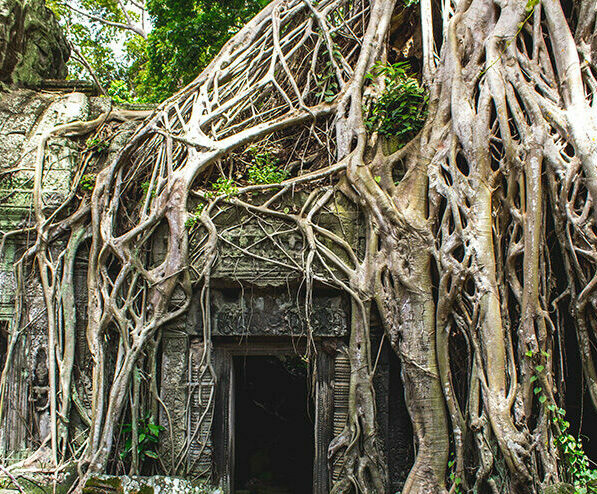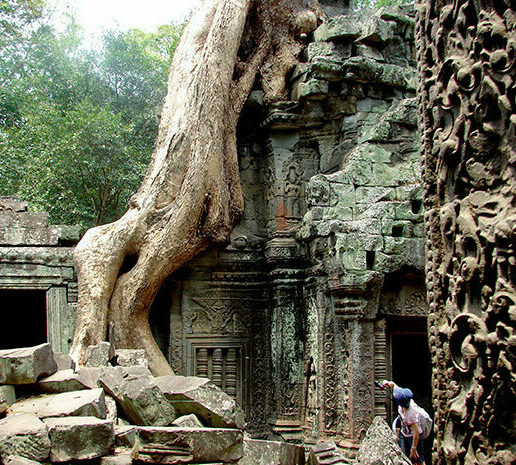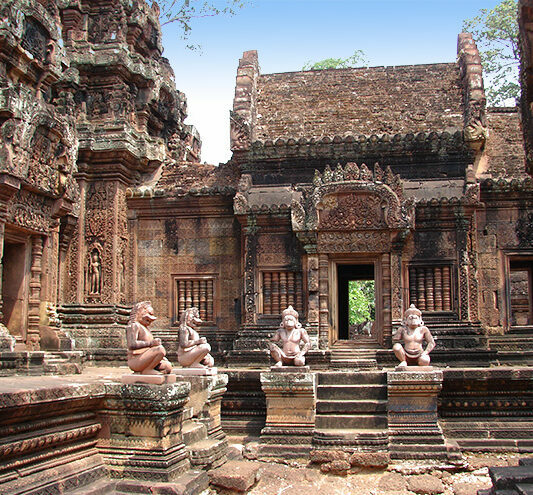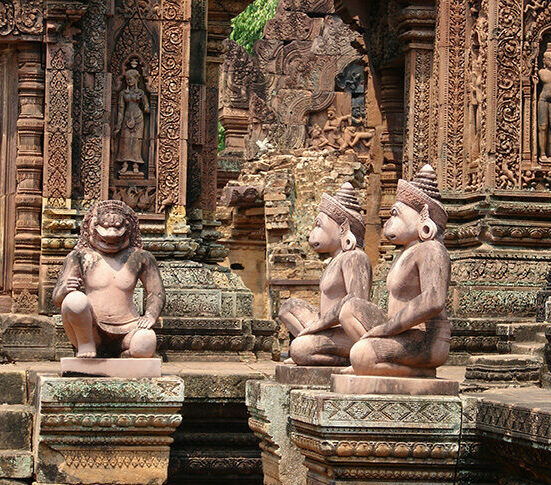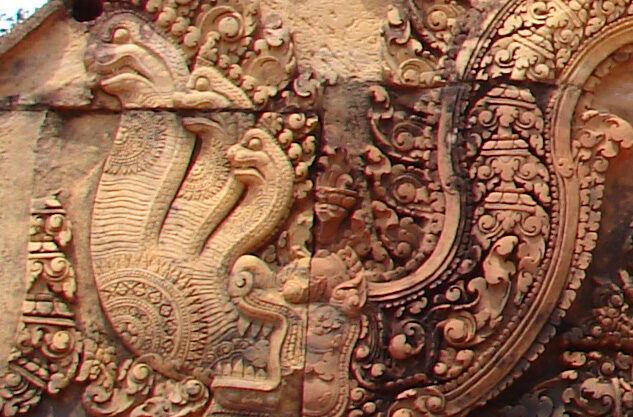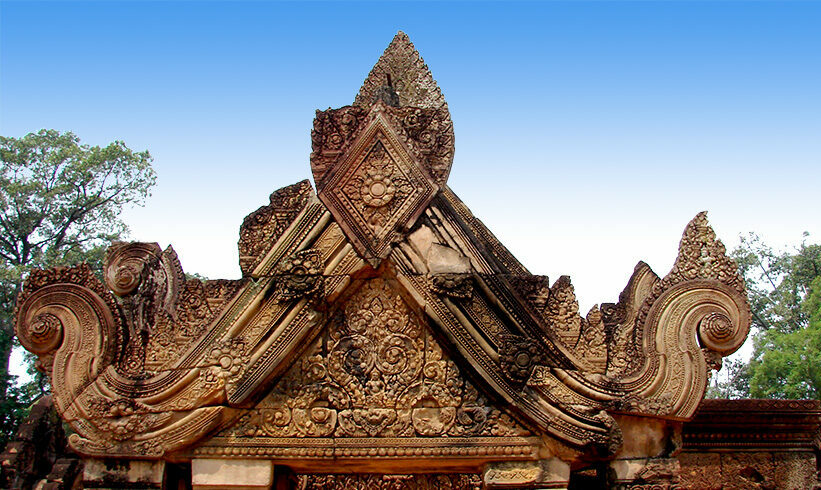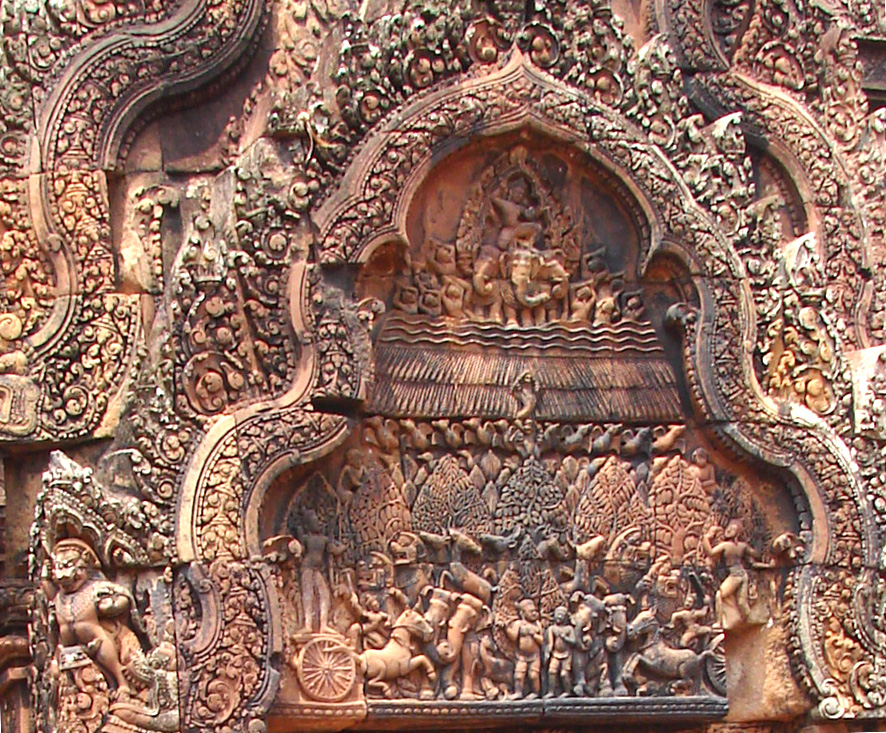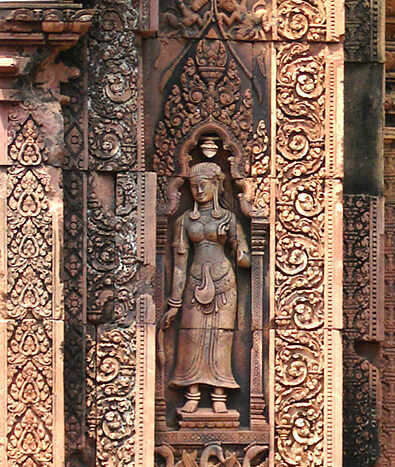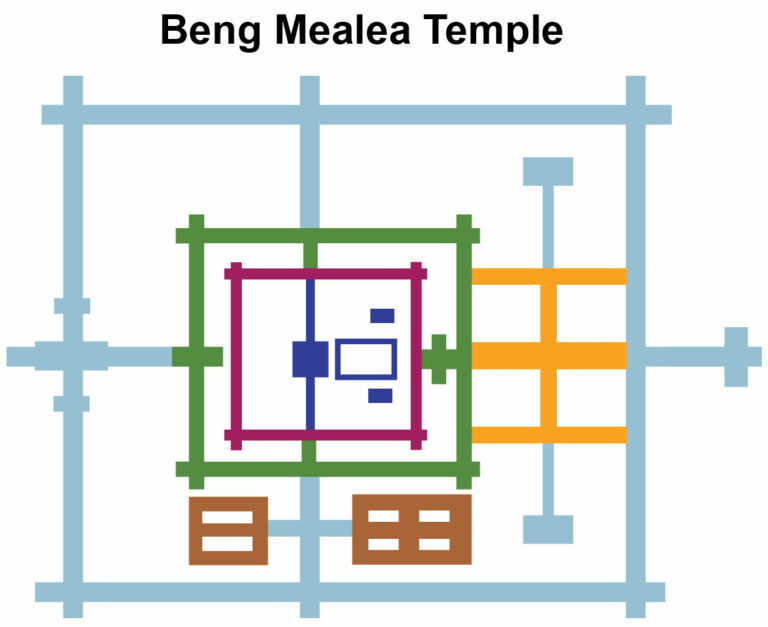Angkor history
Angkor is the center of the once thriving Khmer Empire and today the most significant monument of Khmer architecture, recognized in 1992 by UNESCO as a World Heritage Site. In its beauty and grace, Angkor competes with the buildings of ancient Greece and Rome and in grandeur and scale with the Egyptian pyramids.
An ancient legend says that the ancestors of the dynasty of Khmer kings were the Indian prince Preah Thong and the snake woman, the daughter of the supreme ruler of the lands of the Maharaja. The prince’s father exiled him from Delhi. One evening, when the wandering prince was settling for the night, a snake woman appeared to him, frolicking on the sand in all her dazzling beauty.
The prince took her as his wife, and the Maharaja gave them the land by drinking the water that covered it. The land was named Kabuga, and he built the capital there. This legend shows that the ancestors of the Khmer were Hindus and aborigines. The history of the great empire began in 802 when the young king Jayavarman II proclaimed himself the universal monarch and called himself King Devaraja, the glorious king of Cambodia.
The title Devaraja indicated his special connection with Shiva and the divine essence of the king. The symbol of King Devaraja became a lingam, a phallic symbol, the incarnation (embodiment of the soul in a material body) of Shiva. They placed lingam in the central, highest tower of the temple-the mountains.
The Temple of Horus is a unique religious building consisting of several platforms with numerous towers. The temple of Horus was in the center of the city, and the lingam was in the center of the temple. The lingam combined the name of the king and the name of Shiva. People worshipped lingam and deified the king. Shaivism was the state religion.
Jayavarman II united the scattered small principalities into a powerful and prosperous country. For six centuries until 1431, when Thai troops captured the Khmer capital and forced most of the population to migrate to the southern regions of Phnom Penh. No matter what, Angkor remained the most significant and influential center of civilization in the Southeast.
Four centuries later, in the 1856 year, the French reopened these temples. They discovered a gigantic complex in the jungle, heavily damaged by vegetation. Since then, people have spent a lot of effort in restoring temples. They are still working on this process today.
Angkor Wat is the main, but not the only, temple located near Siem Reap. The entire area of the complex often referred to as Angkor, is about 300 square kilometers. Fortunately, the most famous temples are located near Siem Reap. Due to this size, the whole place is not one huge monument of the past, as one might think because the jungle and rice fields are everywhere between the temples.
Many photographers with cameras on tripods are eager to get a good photo of this temple, especially at sunrise or sunset. You may be unlucky, and the weather will be cloudy or rainy during your visit to Angkor Wat. Then try to make time and return for a few minutes to the front of the temple in the afternoon, when the sun will be in the west and will become your ally in the shooting. Try also to take a picture of the temple and its reflection in the water.
Opening hours are from 05:00 to 17:30.
Angkor Thom is a royal city within Angkor itself, moated and walled. Inside the wide city wall, with impressive gates and canals, there are many sights you should see, like the Bayon temple, in which giant stone faces have become one of the most recognizable images associated with classical Khmer art and architecture.
There are five entrances to the city – four gates, one for each cardinal direction, and the victory gate leading to the area of the Royal Palace. They were used only by the king and his family, and, as an encouragement, the victorious warriors entered the city through them. Each gate is crowned with four giant faces – images of King Jayavarman VII, who built Angkor Thom, stylized as the face of Lokeshvara. Try not to drive, but walk through this gate, past the sculptures of gods and demons with a snake on the sides of the road, which serve as an illustration of the myth of churning the milky ocean for amrita, the nectar of immortality, which promised the prosperity of the empire. The South Gate is often the first stop on tour.
At the center of Jayavarman VII’s capital, Angkor Thom, is the Bayon Temple, the king’s state temple of the Mahayana Buddhist King.
Most Bayon towers have four cardinally oriented carved faces, thought to be a combination of Lokshwara and Jayavarman VII. If it seems somewhat chaotic from an architectural point of view, then this is most likely because it was built over a century by different architects.
Every tourist visiting the temple can also enjoy the contemplation of two impressive sets of bas-reliefs (on the outer walls of the lower level and on the upper level, where are stone faces), which combine mythological, historical, and mundane scenes: scenes from the historical naval battle between Khmer and Cham, land battles, civil war, scenes from real everyday life, such as market scenes, cooking, childbirth, cockfights, and chess games.
Of course, vast crowds of tourists will constantly interfere with taking a good photo. You can try to take a picture of the temple early in the morning or after 16-00. I took pretty good photos of the outside of the temple around 3 pm, approaching the temple from the road leading from the south gate.
Opening hours are from 07:30 to 17:30.
Baphuon temple
Ta Prohm, an extensive monastic complex, was one of Jayavarman VII’s first major temple projects and was dedicated to his mother. The architectural style of the Ta Prohm complex is similar to that of the later temples of Jayavarman VII Preah Khan and Banteay Kdei.
It is a must to visit, if only because it is the best example of temples in the style of a monastery complex.
But one more feature makes it extremely interesting for tourists: it is only partially cleared of jungle thickets, deliberately not fully restored. You will see how massive fig and silk cotton trees sprouted through the towers and corridors of the temple next to the stone carvings. They create an atmosphere lost in the jungle and only that of the mysterious temple you found. It is if, of course, you managed to come here by the time when buses with crowds of organized tourists had not yet arrived here. You will be interested to know that some scenes of the movie “Lara Croft: Tomb Raider” were filmed on the territory of Ta Prom.
We managed to take some successful, as it seems to us, photos on the theme “lost in the jungle, overgrown with trees temple.” I wish you good luck exploring its dark corridors and taking your unique images.
Opening hours are from 07:30 to 17:30.
Banteay Srei temple
Banteay Srei is a temple set back from the main group of Angkor temples (16 miles to the northeast) requiring extra travel time but well worth it! Banteay Srei roughly translates to “stronghold of women”, but this is a modern name that probably refers to the delicate beauty of the carvings. Indeed, one gets the impression that the temple was created as a gift to the beloved woman. But this Buddhist temple was dedicated to the Indian god Shiva. His original name is Tribhuvanamaheshvara (the great lord of the trinity world – in connection with the Shaivite lingam that served as his central religious image).
And it was the only rather large temple in Angkor not built by a monarch – it was built by a brahmin adviser named Yajnavaraha under the powerful king Rajendravarman II. This is apparently due to the relatively small size of the temple compared to the temples that were built by the kings.
But, despite its relatively small size, Banteay Srei is very popular among tourists due to the unique decorative carvings on the walls of amazing red color, because the temple is built mainly of red sandstone, a material that can be easily processed and has a bright pink-red-red color. It seems that you are in a fairyland – the walls are densely covered with probably the most beautiful, deep, and intricate carvings and ornaments that you can see in the temples of Angkor. Please note that in the scenes from the Indian epic, present in the carvings on the walls, images dedicated to Shiva predominate in the southern part of the temple, and images dedicated to Vishnu dominate in the northern part.
It seems to me that the best photos in this temple can be taken either in the morning or after two in the afternoon. But given that the temple is popular with tourists, it is probably better to come here as early as possible.
The entrance to Banteay Srei opens at 7:30 and closes for viewing at 17:30. Try to cover your legs and shoulders when visiting the temple.
Prasat Beng Mealea
The distant temple Prasat Beng Mealea is 50 km from Siem Reap. This rather large temple is practically not restored and is overgrown with moss, ficus, and Cotton trees. Along with the preserved corridors and rooms, many ruins are overgrown with jungle. Sometimes it will seem to you that you are caught in the plot of a book by Rudyard Kipling or the adventures of Indiana Jones.
The temple was built in the 12th century during the reign of Suryavarman II, and its layout is similar to the structure of Angkor Wat. Historians consider the Beng Mealea Temple to be the predecessor of Angkor Wat. The famous Angkor Wat was built on the model of the Beng Mealea temple. In Beng Mealea, the same cruciform galleries connect the second and third fences as in the Angkor Wat temple. We can notice two libraries located north and south of the cruciform galleries.
Tourists move among the ruins of the temple on wooden bridges and decking. If you get to the temple at the time of the most significant influx of tourists, you will have to move in a line from those who want to take another selfie. That is why you need to arrive at the Prasat Beng Mealea early. Use the services of a guide or launch an audio file with the temple’s history on your phone. Listening to the temple’s history will make the journey through the ruins much more enjoyable.

